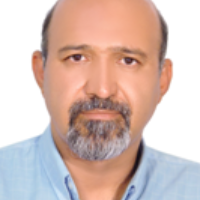Modeling of erosion and sediment transport in rivers using the Gstars3 model
Modeling the erosion and sediment transport is one of the major problems which discussed in river engineering projects such as river intake and dam construction. In some cases, careless estimation of the river sediment load causes failure of river engineering projects. Bed load of the river sediment is one of the main parameters for assessing the stability of river form and evaluating the river power flow. The bed load measurement has much more difficulty in comparison with the suspended load, so measuring the sediment load of rivers is limited to the suspended load measurement. Estimating the river sediment load is conducted with study on the river hydraulic, flow regime, river morphology grading materials of the sediment load. Control and minimization of defection to the hydraulic structure caused by the river sediment load needs to define the river flow regime, sediment motion, erosion and degradation mechanism. The erosion in river has several effects on the river flow regime such as descending the water surface elevation that may cause a decrease in the efficiency of hydraulic structures such as intakes and pump stations. River management, regarding to the sediment transport conditions, causes an increase in the operation period. Study on the sediment transport in rivers are usually conducted with laboratory experiments and field study. In this regard, due to the high cost of experiments and field study, researchers attempt to model the sediment transport using the mathematical approaches. In order to achieve the purpose, the flow equations for rivers such as Saint Venant equation is coupled by sediment transport equations such as Akers-White, Englund-Hansen, Laursen, Meyer-peter Muller, Tofaletti (field and laboratory) and Yang, and numerical is solved by advanced numerical methods. Free or commercial powerful software packages have been provided in order to facilitate the use of mathematical approaches. Mike 11, as commercial software, and HEC-RAS, SSIM, FLUVIAL and GSTARS, as free software, could be mentioned. Several studies are done using free software packages such as HEC-RAS. Jabary et al (2014) used the HEC-RAS software to model the sediment transport in Abhar River. They stated that the Yong formula is more accurate among the other empirical approaches to model the river bed elevation. They considered the graded material of sediments, river cross sections and flood hydrograph with 25 years return period as input parameters for the model. They stated that the HEC-RAS model has suitable performance for modeling the sediment transport in Abhar River. Alami (2003) used HEC-6, River Intake and GSTARS-V2 to model the sediment transport in reservoir of dams and stated that the GSTARS is more accurate in comparison with the other software packages. Seyedian et al (2006) used the GSTARS-3 to model the sedimentation of river load in the Voshmgir Dam and predicted the volume of sediments for the next seven years. Shahinejad et al (2009) used the GSTARS-2.1 to model the morphological variation of Karun River within the Ahvaz City. They evaluated the river bed elevation for the next seven years. Due to high important effects of modeling the river sedimentation on the success of river engineering projects, modeling the sediment transport in Telvar River using the GSTARS-3 is considered in this paper. The Telvar River is a main river in the Kordistan Province, western Iran. The catchment area of the Telvar River is about 147 Km2 and about 26.1 Km of the river was considered as case in this study. The GSTARS was developed by Molinas and Yang (1985) to model the alluvial rivers, this model has been modified with Yang et al (2006) and nowadays the GSTARS-4 is the last version of the GSTARS. The GSTARS is in involved four parts: First, using the energy and momentum equations for the water surface calculation. Second, using the concept of flood routing for routing the river sediment load. Third, using the concept of intensity of energy losses, in other words, using the minimum power flow theory for modifying the width and depth of flow and fourth, evaluating the Criteria of slope stability. The GSTARS included 14 equations for modeling the Non-cohesive sediments. The aim of this study is analyzing the longitudinal erosion of the river bed and also evaluating the cross section width variation and at the end, selecting the suitable empirical formula which has suitable performance for modeling the case study area. The model validation was conducted by a trial and error process because of evaluating the erosion such as sedimentation depends on the empirical formula and graded material curve. Therefore, a number of formulas which had more suitable performance were selected. During the model validation process the result of model was compared with the measured data which was recorded at the 2013 and found that the Yang method is more suitable for modeling the river bed elevation. The results of this study showed that the GSTARS model has suitable performance for modeling the erosion and sedimentation in the Abhar River, and this software can be used for modeling the cross section erosion and finding the area which has high potential for erosion and sedimentation.
- حق عضویت دریافتی صرف حمایت از نشریات عضو و نگهداری، تکمیل و توسعه مگیران میشود.
- پرداخت حق اشتراک و دانلود مقالات اجازه بازنشر آن در سایر رسانههای چاپی و دیجیتال را به کاربر نمیدهد.


